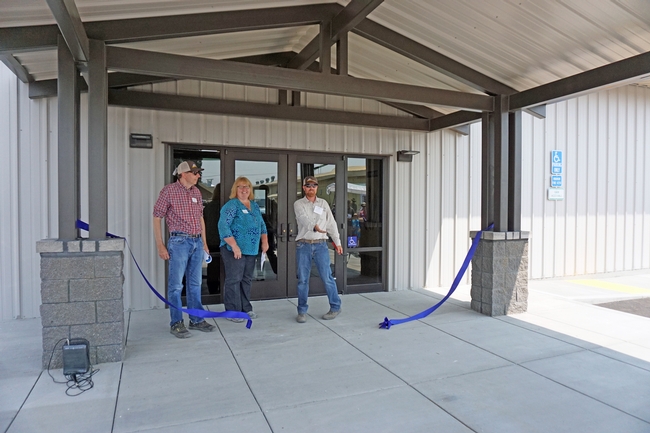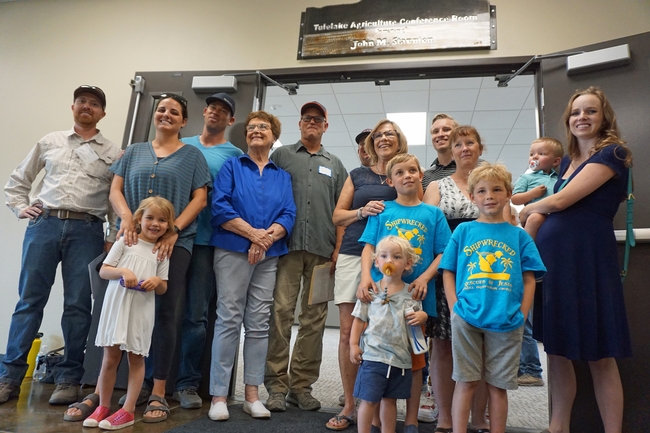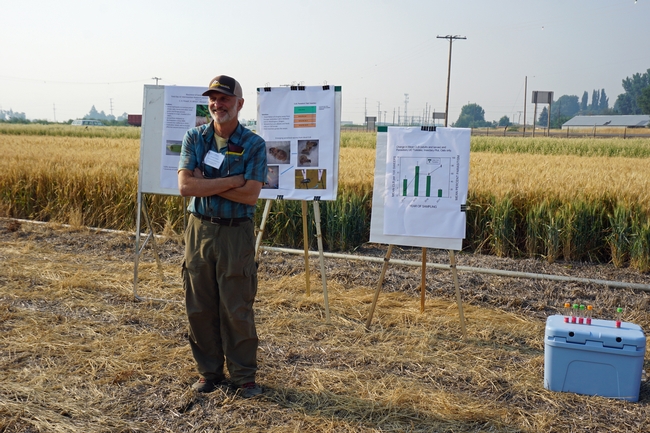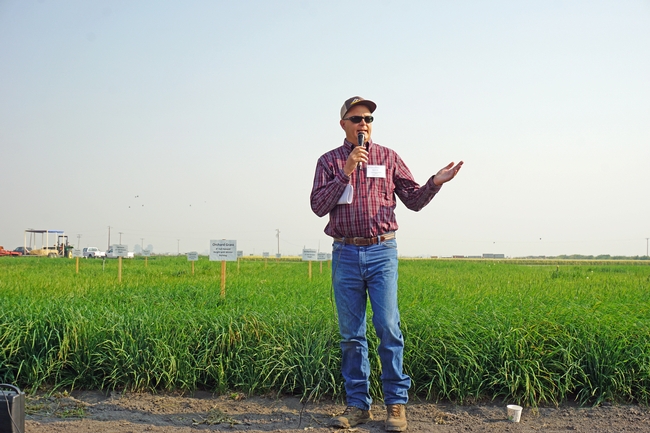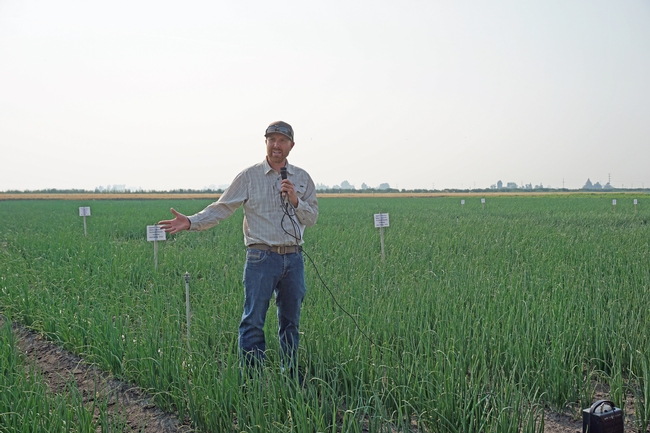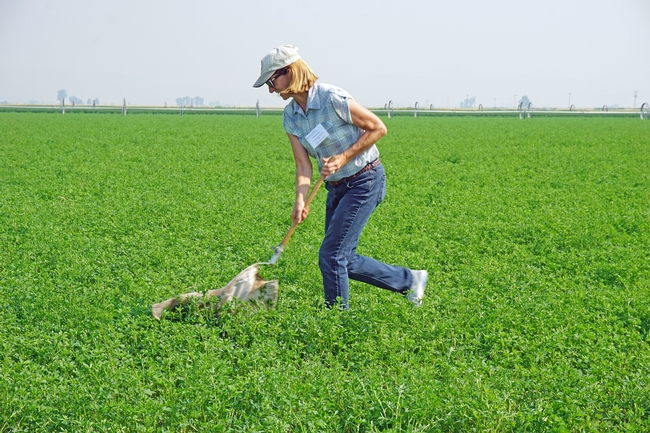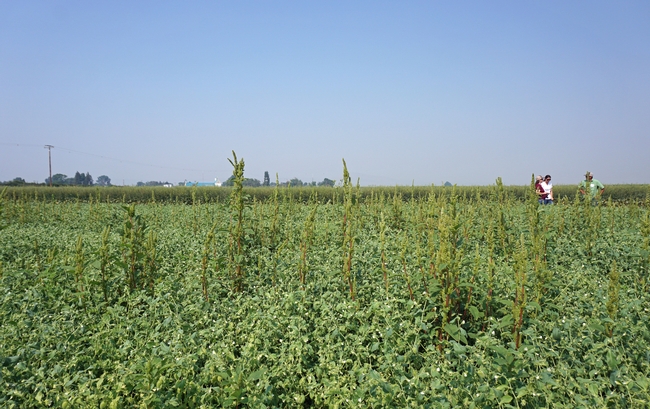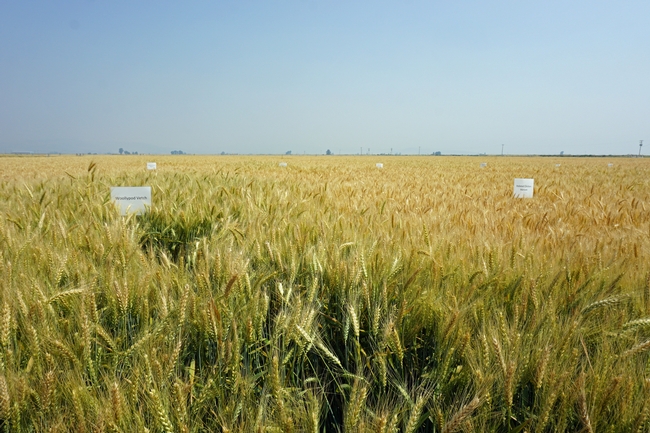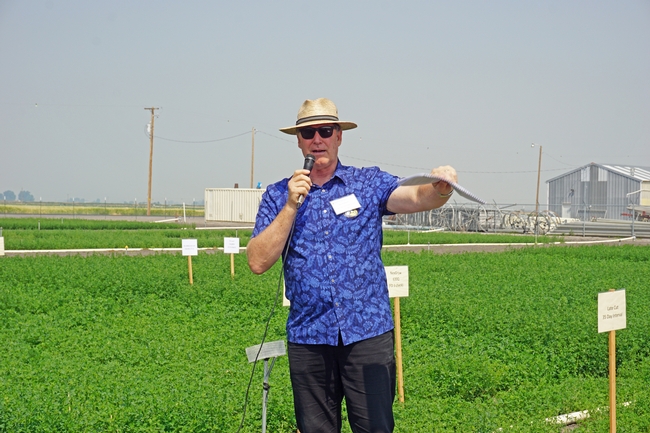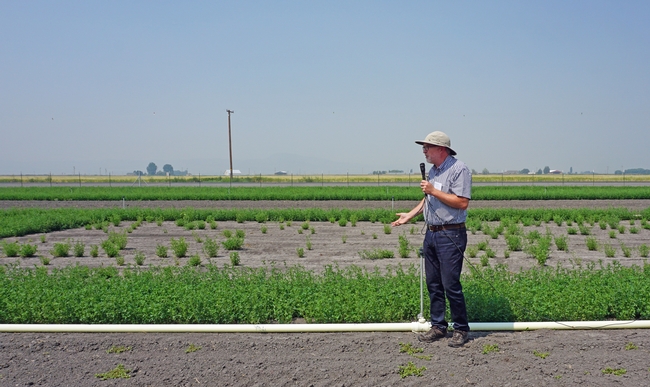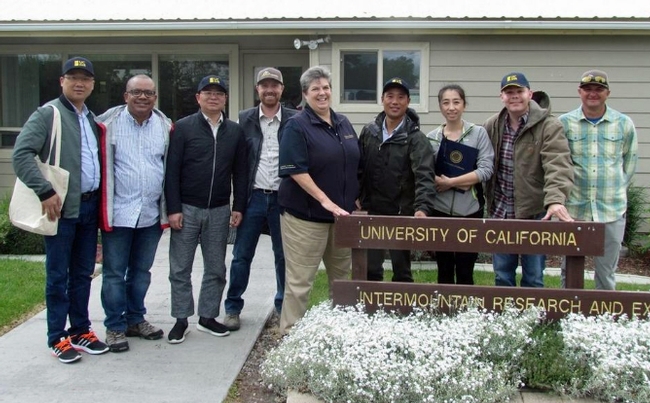Posts Tagged: Rob Wilson
UC research facility brings state-of-the-art conferencing to Tulelake
UC Agriculture and Natural Resources marked the opening of a new conference and laboratory building at its Intermountain Research and Extension Center in Tulelake July 26, bringing to the region a state-of-the-art facility for business meetings, job fairs, trainings, conferences and community events.
"The facility is the first in the Tulelake area to offer modern audio-visual infrastructure and high-speed internet connectivity capable of supporting remote presentations to stay in touch with groups from around the world," said Rob Wilson, IREC director. "We hope this facility will greatly increase the visibility and accessibility of local events and help draw more regional attention to the area."
UC ANR funded construction of the $2 million building. IREC is working with the community to complete the project with furnishings and equipment.
The conference room is named after John Staunton, a local farmer and supporter of IREC whose family donated $25,000 in his memory to the project. Another conference room bears the name of Winema Elevators/Western Milling for its gift of $15,000. Donations to the facility have also been made by Sensient Natural Ingredients, Macy's Flying Service and Basin Fertilizer
The conference building opening followed the 2018 IREC field day, an annual event that showcases the research underway at the 140-acre facility.
Research presentations included updates about work on biological control of cereal leaf beetle, influence of fall harvest management of irrigated grass hays, onion white rot, managing alfalfa weevil and clover root cucurlio, pulse crop options for the Klamath Basin, cover crops and amendments, cutting schedule effects on low lignin alfalfa and germplasm evaluation of alfalfa and tall fescue.
Chinese scientists visit UC ANR's research center in Tulelake
UC Agriculture and Natural Resources vice president Glenda Humiston welcomed a delegation of Chinese agricultural scientists to UC ANR's Intermountain Research and Extension Center in Tulelake in June, reported Danielle Jester in the Siskiyou Daily News.
"They're trying to improve their agriculture," Humiston said. "We need all farmers and ag working together, and we need a good working relationship with China – there's a big market there.”
During her opening remarks, Humiston said Chinese farmers faced many of the same issues as those in the U.S.
"They are responding to global climate change, drought and pests while trying to improve food security and water use efficiency," Humiston said. "They see UC Cooperative Extension as an effective research model; we hope that scientific collaborations will accelerate solutions and help maintain relations for California agriculture with China."
The group toured the Intermountain Research and Extension Center, the northernmost of UC ANR's nine research and extension centers.The 140-acre facility is four miles south of the Oregon border. Research at the center is focused on irrigated field and vegetable crops, weed, insect and disease management, water conservation and plant fertility.
During the tour of the station, one of the Chinese scientists asked what factors the researchers look at to determine the health of the soil. In response, center director Rob Wilson listed the soil's nutrients, its bulk density, pH, organic matter content, carbon to nitrogen ratios, existence of microbes, and existence of disease in the soil, Jester reported.
UC research center in Tulelake commemorates UCCE centennial
The annual field day at the UC Intermountain Research and Extension Center held last week provided an opportunity to mark the 100th anniversary of UC Cooperative Extension with leaders of the organization, reported Todd Fitchette in Western Farm Press.
The research activities at the Intermountain center, situated near the California-Oregon border in Tulelake, focus on peppermint, horseradish, small grains, wheat, potatoes, alfalfa and onions. At the field day, UCCE researchers discussed the progress of alfalfa production in the Klamath Basin, suppressing white rot disease in processing onions, maximizing profitability of wheat, pest management in peppermint and other topics.
The Intermountain Research and Extension Center is one of nine centers under the UC Division of Agriculture and Natural Resources (ANR). The 140-acre facility provides UCCE advisors and specialists the space and support needed to conduct agricultural research in a high mountain interior valley climate zone.



